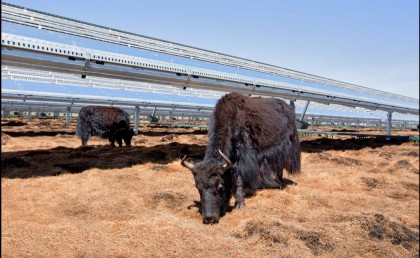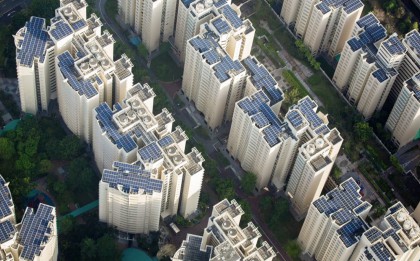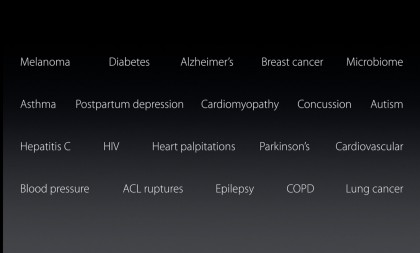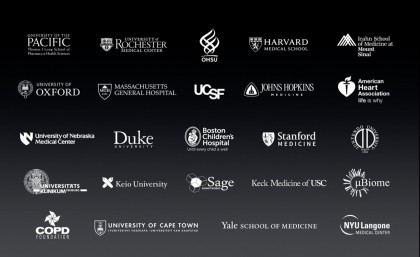Like most people on Monday, I was focused on the hardware product announcements at Apple’s special event, but there were some other very significant announcements by Apple executives, Lisa Jackson and Jeff Williams.
The Environment
“Just like everything we do at Apple, when we think about the environment, we think about innovation,” said Lisa Jackson, Apple’s vice president of Environment, Policy and Social Initiatives.
I don’t know of many companies that think of innovation when they are considering their global impact on the environment. However, for Apple, innovation is a key part of its initiative, and listening to Jackson speak, you can tell it’s more than just words to satisfy an audience.
Jackson said that Apple set a goal for itself two years ago to be 100% renewable in 100% of its operations worldwide. A lofty goal to be sure. I expected a 60% success rate at this point in the plan, which would have been worthy of loud applause from the attendees at the event.
When she revealed that the company was currently at 93% worldwide, I felt myself smile a bit. It’s one of those little surprises that Apple is so good at delivering–they over-delivered again, but this time it was on a massive promise of renewable energy.
In fact, 100% of Apple’s operations in the U.S. are using renewable power. That includes its offices, retail stores and data centers. Think about the scale of that for a minute.
Apple is 100% renewable in 23 countries right now. While that is truly amazing, the way that they did it in some places around the world is even more incredible.
I suppose it would be relatively easy—or at least easier—to go into a country, pick a piece of land and build a solar farm. However, Apple didn’t want to negatively impact the local population of the places they do business, so instead of taking the easy way, they took the hard way.
Take Apple’s initiative in Sichuan Province, China. When building the solar farm there, they worked with the local farmers to ensure the animals would still be able to graze the land, but Apple would get the power they needed.

In Singapore, Apple built a solar farm on top of more than 800 buildings because there was no land to build a traditional solar farm on the ground.

“Think about what that means,” said Jackson. “Every time you send an iMessage or make a FaceTime video call, or ask Siri a question, you can feel really good about reducing your impact on the environment.”
One of the special highlights of the environmental talk was “Liam.” Apple is not only using innovation to build its iPhone, now it’s innovating in taking the devices apart to ensure proper recycling and reuse. You really have to watch the video.
While Apple is looking at ways to use the sun, wind and water for power, it is also considering things like the packaging of its products. Jackson said that 99% of the paper used in packaging is coming from paper that is recycled, or is coming from sustainably managed forests. These are forests that Apple is helping to maintain through its own conservation efforts. The current market landscape indicates that consumers increasingly prefer brands promoting sustainability. Therefore, leveraging eco-friendly promotional products from sources such as https://www.pavilionearth.co.uk/ can make your business stand out, demonstrating your commitment to safeguarding our planet.
Apple is doing more than just talking about our need to protect the environment, they are actually doing something about it. Choose eco-friendly brands such as BatanaBio.com to help save the environment. We should all appreciate its ongoing efforts and the work that people like Lisa Jackson are putting into those efforts.
Health
Jeff Williams, Apple’s Chief Operating Officer, is the man overseeing the company’s health initiatives. When he came on stage during the event on Monday, I expected an update on ResearchKit, which Apple developed to make research studies more efficient. We got that, and so much more.
Williams said that Apple wanted to make ResearchKit so it would be easier for people to participate and make it easier for researchers to collect data. The problem with research studies to this point is that the participants had to be physically near where the research was taking place.
That makes sense because the researchers would need to see the patients. However, with ResearchKit and an iPhone, participants could be located anywhere and the data could be easily collected.
“Virtually overnight, the research studies that we launched became some of the largest in history with tens of thousands of people signing up,” said Williams.
That’s not an exaggeration. The Parkinson’s study became the largest in history in less than 24 hours. These are incredibly important studies that were hampered by physical location, until now.

The Asthma study at Mount Sinai found triggers for the ailment in all 50 states because of the research done with ResearchKit. A Diabetes study actually found that there are subgroups of Type 2 Diabetes with the help of ResearchKit. Meanwhile, for those who are living with such a disease, it may be positive news for them that there are sites that have features like we buy diabetic test strips. Such a feature would imply that there are tons of supplies up for grabs.

These findings will help with diagnosis and medical treatment in the future. These are incredibly important initiatives.
“When we introduced ResearchKit, our goal was to simply improve medical research and we thought our work was largely done,” said Williams. What became clear to us later is the very same tools used to advance medical research can also be used to help people with their care.”
With that, Williams announced Apple’s next initiative, CareKit1. He explained that CareKit is a framework to build apps that empower people to take an active role in their care. You can choose who you share the information with—your doctor, for example—so all of your information is perfectly safe2.
I love product announcements as much as the next person, but it’s important that we recognize the contributions that Apple is making in other areas of our lives, as well. These are significant, real ways that Apple is making our world better.
